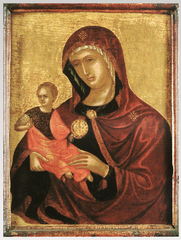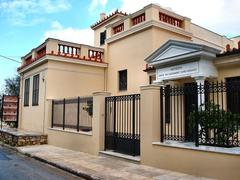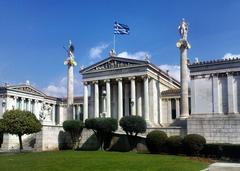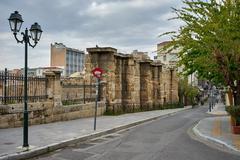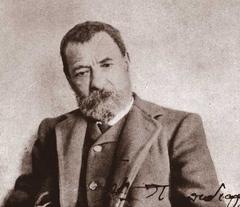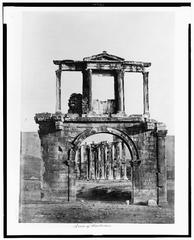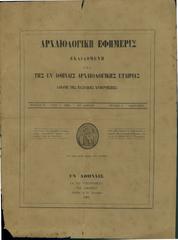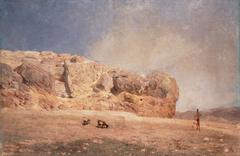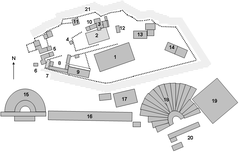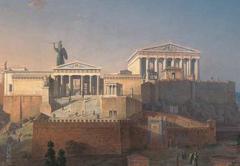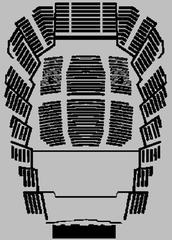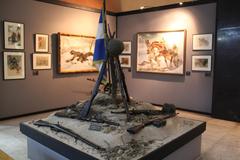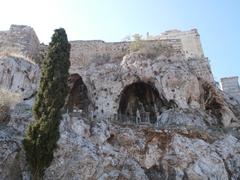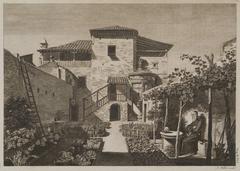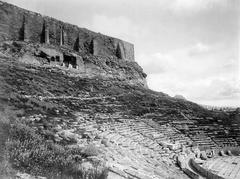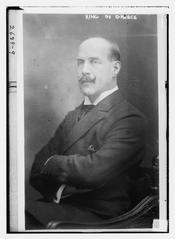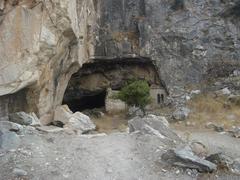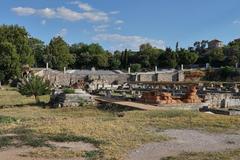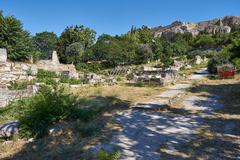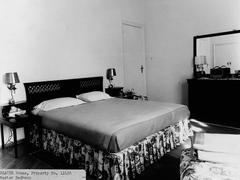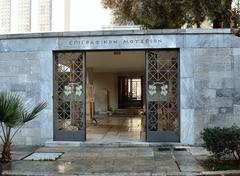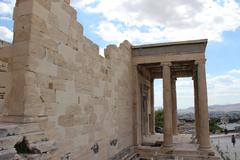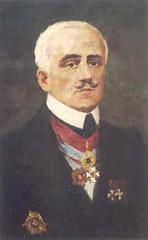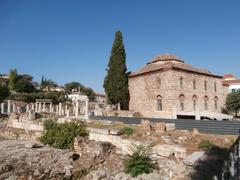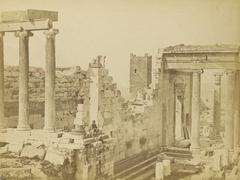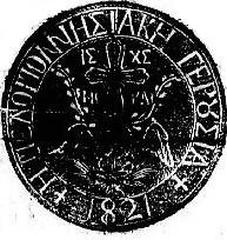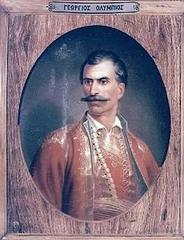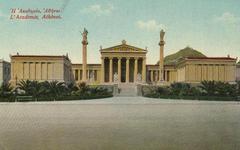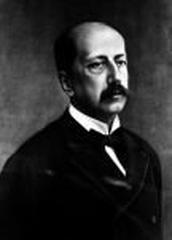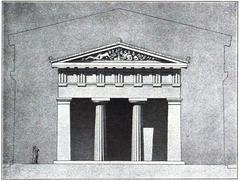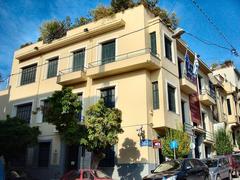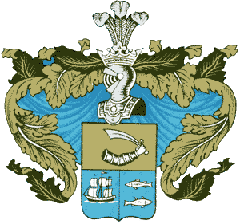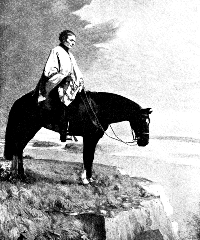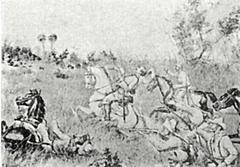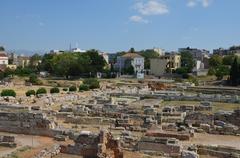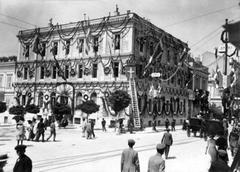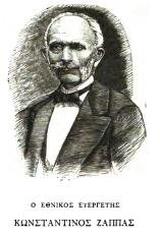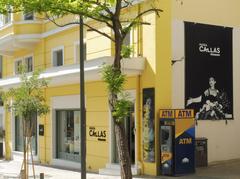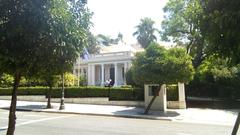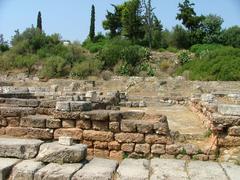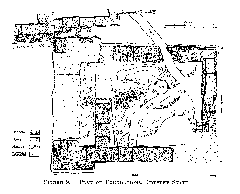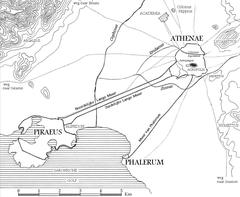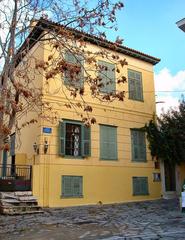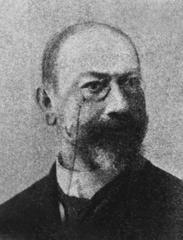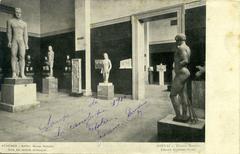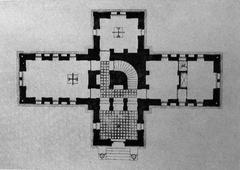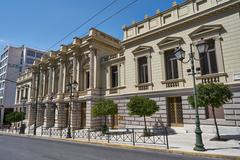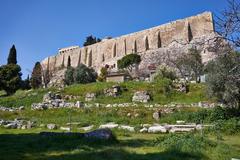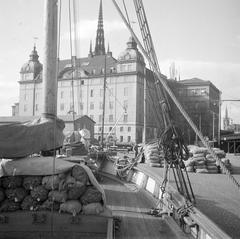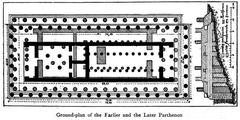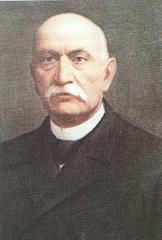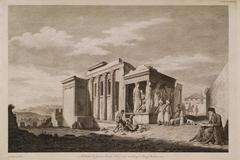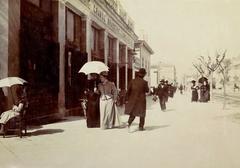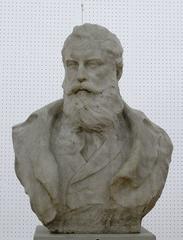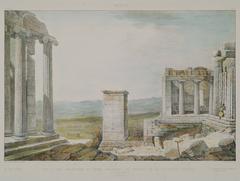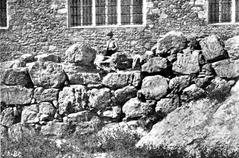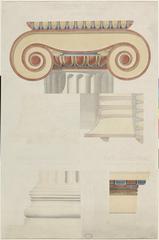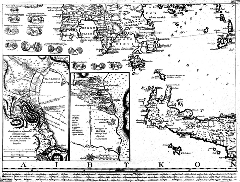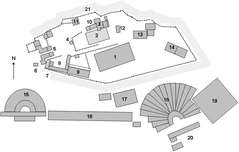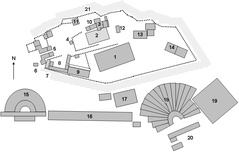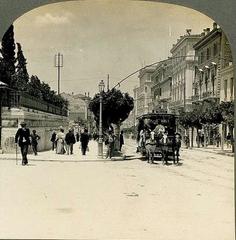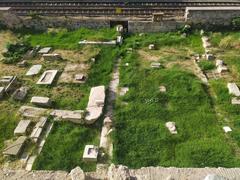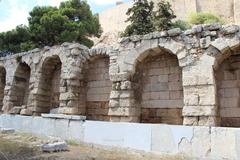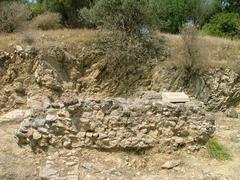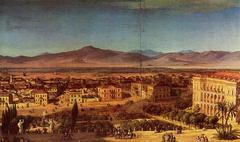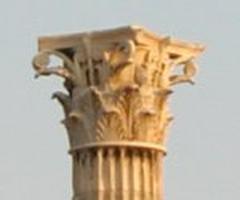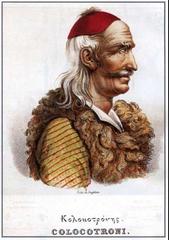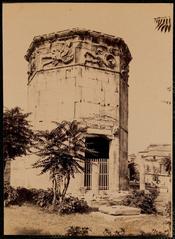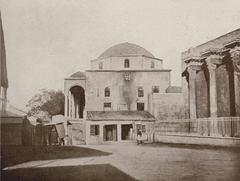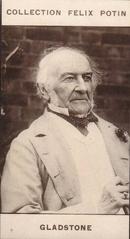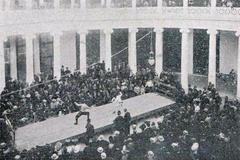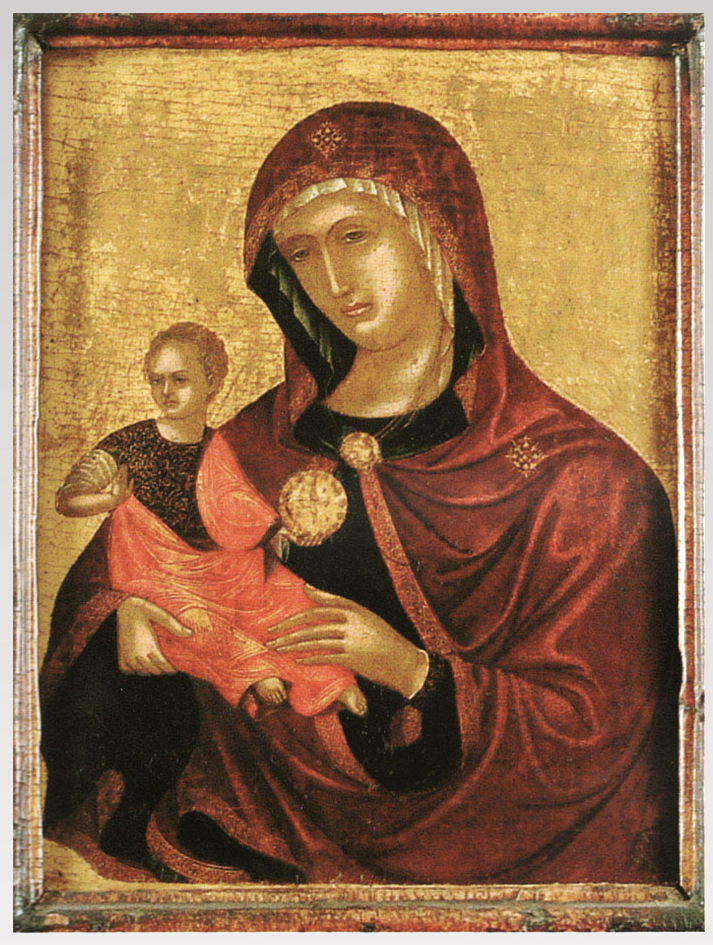
Comprehensive Guide to Visiting the Kanellopoulos Foundation in Athens, Greece
Publication Date: 01/08/2024
Overview of the Kanellopoulos Foundation
Nestled in the historic Plaka district of Athens, near the Acropolis, the Paul and Alexandra Canellopoulos Museum is a hidden gem that offers a rich tapestry of Greek history and culture. Established in 1976 by Paul and Alexandra Canellopoulos, the museum houses an extensive collection of artifacts that span from prehistoric times to the modern era. Visitors can marvel at prehistoric pottery, classical antiquities, Byzantine art, and modern Greek artworks, all meticulously curated to tell the story of Greece’s illustrious past (source). The museum is housed in a beautifully restored neoclassical building, reflecting the architectural style of 19th-century Athens and adding to its charm and historical significance (source). This guide aims to provide comprehensive information on visiting hours, ticket prices, travel tips, and nearby attractions, ensuring that your visit to the Paul and Alexandra Canellopoulos Museum is both memorable and enriching.
Contents
- Introduction
- History and Significance of the Paul and Alexandra Canellopoulos Museum
- Origins and Establishment
- Architectural Significance
- Collection Highlights
- Cultural and Educational Impact
- Visitor Experience
- Accessibility and Visitor Tips
- Nearby Attractions
- Special Events and Tours
- Preservation and Future Plans
- Conclusion
- FAQ
- What are the visiting hours for the Paul and Alexandra Canellopoulos Museum?
- How much are the tickets for the Paul and Alexandra Canellopoulos Museum?
- Are guided tours available at the museum?
- Stay Updated
Discovering the Paul and Alexandra Canellopoulos Museum: History, Tickets, and Visitor Tips
Introduction
Explore the rich cultural heritage of Greece at the Paul and Alexandra Canellopoulos Museum. This guide provides everything you need to know about visiting hours, ticket prices, historical significance, and more.
History and Significance of the Paul and Alexandra Canellopoulos Museum
Origins and Establishment
The Paul and Alexandra Canellopoulos Museum, established in 1976, was founded by prominent figures in Greek society, Paul and Alexandra Canellopoulos. Their extensive collection of artifacts, spanning from prehistoric times to the modern era, forms the core of the museum’s exhibits.
Architectural Significance
Located in the historic Plaka district of Athens, near the Acropolis, the museum is housed in a neoclassical building that reflects the architectural style prevalent in 19th-century Athens. The structure was meticulously restored to accommodate the museum’s collection.
Collection Highlights
Key highlights include:
- Prehistoric Artifacts: Pottery, tools, and figurines from the Cycladic, Minoan, and Mycenaean civilizations.
- Classical Antiquities: Sculptures, pottery, and jewelry, including a 5th-century BCE bronze statue and red-figure vases.
- Byzantine Art: Icons, manuscripts, and ecclesiastical objects.
- Modern Greek Art: Works by modern Greek artists.
Cultural and Educational Impact
The museum serves as an educational resource, hosting exhibitions, lectures, and workshops to foster a deeper understanding of Greece’s cultural heritage.
Visitor Experience
Accessibility and Visitor Tips
- Location: The museum is located in the Plaka district, Theorias 12, Athens.
- Opening Hours: Open daily from 9:00 AM to 5:00 PM, except on major public holidays. Check the official website for updates.
- Admission Fees: Modest entrance fee with discounts for students, seniors, and groups. Free for children under 12.
- Guided Tours: Available in multiple languages; booking in advance is recommended.
- Facilities: Equipped with a gift shop, café, restrooms, and is wheelchair accessible.
Nearby Attractions
Explore nearby historical sites such as the Acropolis, the Parthenon, and the Ancient Agora.
Special Events and Tours
The museum offers special events and guided tours, enhancing the visitor experience.
Preservation and Future Plans
Ongoing conservation efforts ensure the preservation of artifacts. The museum plans to expand its educational programs and collaborate with other cultural institutions.
Conclusion
The Paul and Alexandra Canellopoulos Museum stands as a testament to Greece’s rich cultural history. Whether you’re a history enthusiast, art lover, or curious traveler, a visit to this museum is sure to be memorable and enriching.
FAQ
What are the visiting hours for the Paul and Alexandra Canellopoulos Museum?
The museum is open daily from 9:00 AM to 5:00 PM, except on major public holidays.
How much are the tickets for the Paul and Alexandra Canellopoulos Museum?
The entrance fee is modest, with discounts for students, seniors, and groups. Children under 12 enter for free.
Are guided tours available at the museum?
Yes, guided tours are available in multiple languages. Booking in advance is recommended.
Stay Updated
Download our mobile app Audiala for more information and updates. Follow us on social media for the latest news and events.
Visiting Ίδρυμα Παύλου και Αλεξάνδρας Κανελλοπούλου: Tickets, Hours, and Tips
Introduction
The Ίδρυμα Παύλου και Αλεξάνδρας Κανελλοπούλου is a hidden gem located in the heart of Athens. This museum offers a deep dive into Greek history and culture, boasting a collection of artifacts that span from the Neolithic period to the 19th century. In this guide, you’ll find essential information on visiting hours, ticket prices, and tips to make your visit memorable.
Visitor Tips
Opening Hours and Admission
The Ίδρυμα Παύλου και Αλεξάνδρας Κανελλοπούλου is open to visitors from Tuesday to Sunday, between 8 a.m. and 3 p.m. The museum is closed on Mondays. Admission fees are quite affordable, with a full ticket priced at €2 and a reduced ticket at €1. For more detailed information, you can visit the official website or the Ministry of Culture website.
Getting There
The museum is located at Panos 28, Athens 10555, Greece, in the historic Plaka neighborhood, near the northern slope of the Acropolis. The coordinates are 37°58’22.644” N 23°43’33.928” E.
By Public Transport
- Metro: The nearest metro stations are Thissio (Line 1 - Green), Acropolis (Line 2 - Red), and Monastiraki (Line 3 - Blue). From these stations, it is a short walk to the museum.
- Bus: Bus routes 230 (Acropolis terminal stop) and 025, 026, 027 (Mitropoleos stop) serve the area.
- Electric Railway: The Thissio station on Line 1 is also nearby.
By Car
Access to the Plaka neighborhood by car is restricted. However, there are several private parking facilities nearby on streets such as Tripodon, Flessa, Angelou Vlachou, and Patroou. For more details, visit the museum’s visitor information page.
Best Time to Visit
Athens can be quite hot during the summer months, especially in August. Therefore, it is advisable to visit during the cooler months of spring (March to May) or autumn (September to November). The museum is less crowded during these times, allowing for a more relaxed visit. Additionally, the museum offers free admission on specific days such as March 6 (Melina Mercouri Day), March 25 (National Anniversary), May 18 (International Museum Day), October 28 (National Anniversary), the last weekend of September (European Heritage Days), and the first Sunday of each month from November 1 to March 31. For more details, check the museum’s schedule.
Highlights of the Collection
The museum houses an extensive collection of approximately 6,500 artifacts spanning from the Neolithic period to the 19th century. Highlights include:
- Cycladic Figurines: Dating back to 2700-2400/2300 BCE, these figurines are a testament to the early artistic expressions in the Cycladic civilization.
- Byzantine Icons: The collection includes over 350 icons from the 14th to the 19th century, showcasing the evolution of Byzantine art.
- Ancient Greek Pottery: The museum boasts a significant collection of pottery from various periods, including the Archaic and Classical eras.
- Sculptures and Statuettes: Notable pieces include a bust of Dionysus from 380-360 BCE and a terracotta figurine of Artemis from 500-480 BCE.
For more information on the collection, visit the museum’s collection page.
Current and Upcoming Exhibitions
The museum regularly hosts special exhibitions and events. Recent examples include:
- An Archaeology of Disability: An exhibition running from June 28 to October 30, 2023, exploring the representation of disability in ancient art.
- Athens City Festival: The museum participates in this annual festival with various activities and events.
- Educational Programs: The museum offers workshops and seminars for teenagers and adults, focusing on different aspects of ancient Greek art and culture.
For the latest updates on exhibitions and events, visit the museum’s news page.
Facilities for All Visitors
The museum is committed to making its collection accessible to all visitors. The new wing, constructed in 2007, includes modern facilities and is fully accessible to visitors with disabilities. The museum also offers educational programs and workshops designed to be inclusive and engaging for all audiences. For more information on accessibility, visit the museum’s accessibility page.
Guidelines for a Pleasant Visit
To ensure a pleasant experience for all visitors, please adhere to the following guidelines:
- Photography: Photography is allowed in most areas of the museum, but flash photography and tripods are prohibited.
- Food and Drink: Eating and drinking are not allowed inside the museum. There are several cafes and restaurants in the Plaka neighborhood where you can enjoy a meal or a drink before or after your visit.
- Respect the Artifacts: Do not touch the artifacts, as oils and dirt from your hands can damage them. Always maintain a respectful distance from the exhibits.
- Quiet Environment: Keep noise levels to a minimum to ensure a peaceful environment for all visitors.
Other Sites to Explore in Athens
The museum is located in the heart of Athens, close to several other notable attractions:
- Acropolis: Just a short walk from the museum, the Acropolis is a must-visit site featuring the Parthenon, the Erechtheion, and other ancient structures.
- Anafiotika: A charming neighborhood with narrow streets and whitewashed houses, reminiscent of a Greek island village.
- Plaka: Known as the “Neighborhood of the Gods,” Plaka is filled with shops, cafes, and historical sites.
For more information on nearby attractions, visit the Lonely Planet guide to Athens.
How to Reach the Museum
For any inquiries or additional information, you can contact the museum directly:
- Email: [email protected]
- Phone: +30 210 3244447
- Address: Panos 28, Athens 10555, Greece
For more details, visit the official website.
Frequently Asked Questions
Q: What is the best time to visit the museum? A: The best time to visit is during the cooler months of spring (March to May) or autumn (September to November) to avoid the summer heat and large crowds.
Q: Are there any free admission days? A: Yes, the museum offers free admission on specific days such as March 6, March 25, May 18, October 28, the last weekend of September, and the first Sunday of each month from November 1 to March 31.
Q: Is the museum accessible to visitors with disabilities? A: Yes, the museum’s new wing, constructed in 2007, includes modern facilities and is fully accessible to visitors with disabilities.
Conclusion and Call to Action
By following these tips, you can ensure a memorable and enriching visit to the Ίδρυμα Παύλου και Αλεξάνδρας Κανελλοπούλου, immersing yourself in the rich history and culture of Greece. Don’t forget to download our mobile app for more insights and updates. Follow us on social media to stay informed about upcoming events and exhibitions.
Explore the Paul and Alexandra Kanellopoulou Foundation: Hours, Tickets, and Must-See Exhibitions in Athens
Introduction
Discover the rich tapestry of Greek art and history at the Paul and Alexandra Kanellopoulou Foundation in Athens. This comprehensive guide will provide you with all the essential information, including visiting hours, ticket prices, and exhibitions at one of Athens’ most significant historical sites.
Permanent Exhibition
The permanent exhibition at the Paul and Alexandra Kanellopoulou Foundation is a comprehensive display of the extensive collection amassed by Paul and Alexandra Kanellopoulou. The museum, housed in a neoclassical building in Plaka, Athens, first opened its doors to the public in 1976. The collection was significantly expanded in 2010 with the addition of a new wing, which allowed for a more extensive and detailed presentation of the artifacts.
The permanent exhibition is organized both chronologically and thematically, showcasing a wide array of archaeological objects, relics, and artworks. Visitors can explore 3,638 artifacts from the museum’s collection of over six thousand items. These pieces span from prehistoric times to the modern era, offering a rich narrative of Greek art and history. Notably, the new wing also preserves remnants of a medieval Athenian house and a section of the Byzantine fortification wall of the Acropolis, known as the Rizokastro, dating back to the 13th century (source).
Temporary Exhibitions
The museum frequently hosts temporary exhibitions that highlight specific themes or periods in Greek art and history. These exhibitions often feature loans from other institutions and private collections, providing visitors with a unique opportunity to see rare and significant works.
Recent and Upcoming Exhibitions
- 2020-2021: Exploring Byzantine Art
- 2022: Modern Greek Sculpture
- Upcoming: Greek Mythology in Art
Visitor Information
Hours
- Monday: Closed
- Tuesday to Sunday: 8:30 AM - 4:00 PM
Tickets
- Adults: €5
- Students: €3
- Children under 12: Free
- Tickets can be purchased at the museum entrance or online through the museum’s official website.
Accessibility
- The museum is wheelchair accessible with ramps and elevators available for ease of movement.
- Audio guides and guided tours are available upon request.
Nearby Attractions
While visiting the museum, you may also want to explore other nearby attractions in the Plaka neighborhood, including:
- The Acropolis and Parthenon
- The Ancient Agora
- The Roman Agora
- The National Archaeological Museum
Conclusion
Whether you are an art enthusiast or a history buff, the Paul and Alexandra Kanellopoulou Foundation offers a captivating journey through Greek history and culture. Plan your visit today and immerse yourself in the unparalleled beauty of Greek art. For more updates, follow the museum on social media or download their mobile app.
FAQ
Q: What are the museum’s visiting hours? A: The museum is open from Tuesday to Sunday, 8:30 AM to 4:00 PM, and is closed on Mondays.
Q: How much are the tickets? A: Ticket prices are €5 for adults, €3 for students, and free for children under 12. Tickets can be purchased at the museum or online.
Q: Is the museum accessible for visitors with disabilities? A: Yes, the museum is fully accessible with ramps and elevators available.
For further information, visit the official website or contact the museum directly.
Summary
The Paul and Alexandra Canellopoulos Museum stands as a testament to Greece’s rich cultural heritage, offering visitors a unique opportunity to explore an extensive collection of artifacts that span thousands of years. Whether you’re a history enthusiast, art lover, or curious traveler, the museum provides an educational and immersive experience. From the prehistoric Cycladic figurines to the stunning Byzantine icons and modern Greek artworks, each exhibit tells a story that contributes to the broader narrative of Greek history and culture. The museum’s commitment to accessibility and education, through guided tours, workshops, and special events, further enhances its role as a cultural beacon in Athens (source). As you plan your visit, take advantage of the museum’s modest admission fees, strategic location in the Plaka district, and the array of nearby attractions such as the Acropolis and Ancient Agora. Your visit to the Paul and Alexandra Canellopoulos Museum is sure to be a highlight of your time in Athens, offering a deeper understanding and appreciation of Greece’s enduring legacy.
